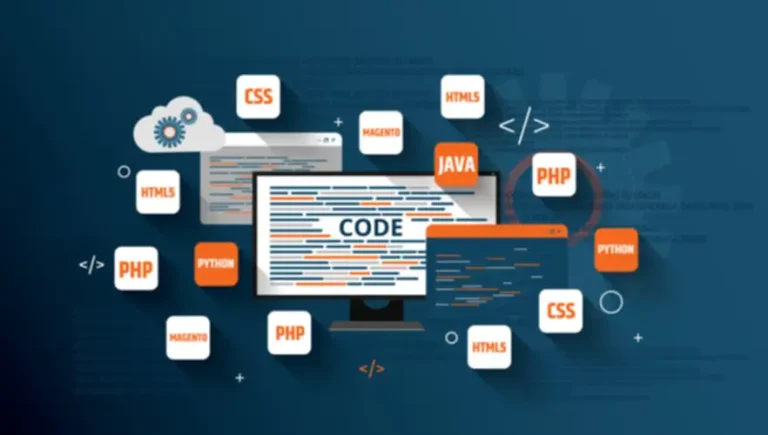Are you seeking to improve your project management expertise and take your career to the next level? This certification program offers complete training on important project administration principles and practices, together with project planning, execution, monitoring, and management. With PMP® Certification Training, you’ll achieve the knowledge and abilities you want to deliver successful tasks on time and within budget. Prepare for the PMP® certification examination and turn out to be a licensed project administration skilled with Simplilearn’s PMP® Certification Training. The environment friendly utilization and implementation of the Cost of Quality method enable a company to assess the variety of assets being used for the Cost of Good Quality and the Cost of Poor Quality. With this important https://www.globalcloudteam.com/ information, the organization can decide the place to allocate sources to improve product quality and the result.
The Components Of Cost Of Quality
A concrete understanding of this idea can help in growing a candidate’s score as there are fairly a couple of LSTM Models questions on the exam which are based on this idea. This might be a prevention price, as the quality administration system and inspection procedures help us keep away from high quality problems. One necessary factor to note is that the Cost of Quality equation is nonlinear.
Tips On How To Determine Which Prices Are High Quality Costs?
The inspection functionality lets you monitor the outcomes of the standard reviews of each your received goods and your finished items. Most companies believe that producing issues of top quality is a expensive endeavor.
Finest Practices When Excited About Coq
This proactive method results in a reduction in guarantee claims and product recalls (external failure costs), thereby bettering buyer satisfaction and decreasing long-term bills. Implementing subtle cost of high quality methods often includes a cultural shift within the group towards continuous enchancment. Businesses may undertake frameworks like Total Quality Management (TQM), which encompasses a company-wide commitment to enhancing product quality. Another technique includes using advanced analytics and real-time suggestions systems to watch quality metrics constantly.
A robust reputation for high quality also can enhance your market share, as shoppers are inclined to favor and trust manufacturers recognized for their reliability. Effective use and implementation of Cost of Quality methodology permits a company to precisely measure the quantity of assets being used for Cost of Good Quality and Cost of Poor Quality. With this useful info the group can determine the place to allocate resources to improve product quality and the underside line.
Juran created a COQ curve that demonstrates the connection between high quality and COQ. Note how your COQ goes down as a function of improved quality and of spending more on prevention and lowering your internal and external failure prices. The best way to implement cost of high quality in project administration is by gathering input information and developing a project high quality administration plan. Effective knowledge analysis is required, adopted by the process of building quality metrics. Next, you should perform high quality assurance and control and devise an enchancment plan to spice up the quality. Properly managed, lowering the cost of high quality shouldn’t compromise the standard of the final product.
- It is a fundamental methodology because it permits the business to derive a aggressive edge over its friends working in the industry.
- Typically, investments in prevention are prioritized as they tend to minimize back the more expensive appraisal and failure bills by preventing defects before they occur.
- Note how your COQ goes down as a perform of improved high quality and of spending more on prevention and lowering your inner and external failure costs.
- Investing in the prevention and appraisal of quality can initially appear costly but might substantially lower inside and external failure costs in the lengthy run.
Product failures can outcome in increased guarantee costs and possibly even product recollects. In addition, there are the onerous to measure prices incurred by way of lack of brand fairness and possible decline in future gross sales. Cost of Quality can have an immense influence on a company’s backside line, positive or adverse.
The introduction of Total Quality Management (TQM) and the work of high quality gurus like Joseph Juran and W. Juran, particularly, popularized the COQ mannequin, advocating that investments in prevention and appraisal may considerably reduce failure prices, both inside and external. Spending extra on prevention and appraisal costs normally leads to a discount in internal and external failure prices. Investing in the prevention and appraisal of high quality can initially appear costly but might considerably decrease inside and external failure costs in the long term. It is important to keep in mind “Quality is the end result of a rigorously constructed cultural environment. It must be the material of the group, not part of the fabric” – Phil Crosby.
In business processes, understanding the value of quality is essential in evaluating the effectivity and effectiveness of organizational methods. It refers to the total sum of prices incurred by investing within the prevention of poor quality and the costs incurred as a end result of penalties of poor high quality. This concept performs an important role in balancing the price in opposition to the perceived worth for purchasers.
By effectively measuring and managing COQ, businesses can not solely improve their high quality processes but also enhance buyer satisfaction, reduce costs, and acquire a competitive benefit available in the market. The main forms of cost of high quality embody Cost of Conformance and Cost of Non-Conformance. While the Cost of Conformance comprises prevention and appraisal costs, non-conformance costs embrace internal and exterior failure costs. Consider a software development firm that makes use of Six Sigma strategies to streamline its coding processes.
In the lengthy term, you must give attention to the prevention of defects rather than attempting to catch the defects you already made. Until such time that you have processes able to producing an ideal product, you might have to depend on inspection so that you don’t send unhealthy merchandise to your customer. The four costs of quality are prevention, appraisal, internal failures, and exterior failures. While many organizations declare to produce or deliver high-quality services and products, do they understand that it isn’t actually free?
Organizations make use of many strategies to stop defects, together with statistical process control, high quality engineering, and training. The cost of quality (also referred to as quality costs) quantifies the entire cost of quality-related efforts and points. In different words, it highlights the monetary influence of attaining and never attaining a high normal in the quality of a company’s merchandise and production processes. Focusing on prevention prices early on can significantly reduce inner and external failure costs, leading to larger profitability and customer loyalty. In this particular instance, the meal kit firm ought to have invested more of their finances in appraisal and prevention prices so they can keep away from paying further for internal and exterior failure prices.
These failure costs are incurred when a product fails to adapt to its design specifications .The value of non conformance is made up of inner failure prices and exterior failure costs. The central theme of quality enchancment is that larger investments in prevention drive even larger financial savings in quality-related failures and appraisal efforts. But inspection is never utterly effective, so appraisal costs stay high as long as the failure costs keep excessive. The solely way out of the predicament is to establish the “right” amount of prevention. Alpha Company once measured Cost of Quality as the amount of guarantee cost versus whole sales.













